#corporate travel san francisco
Explore tagged Tumblr posts
Text
The Future of Corporate Travel: Trends and Innovations to Watch
As the business landscape continues to evolve, so does the world of corporate travel. With advancements in technology, shifting workforce dynamics, and changing expectations from travelers, it is essential for businesses to stay ahead of the curve. Understanding the trends and innovations shaping corporate travel can help organizations optimize their travel strategies, enhance employee experiences, and ultimately drive success. This article explores the key trends and innovations in corporate travel services that are set to redefine how companies manage their travel needs in the coming years.

1. The Rise of Remote Work and Hybrid Models
The COVID-19 pandemic has fundamentally transformed how companies operate, with remote work becoming a viable and often preferred option for many employees. As a result, the need for corporate travel has shifted. While traditional travel for meetings and conferences may have decreased, businesses are increasingly adopting hybrid work models. This new approach combines remote work with occasional in-person meetings, requiring innovative travel solutions.Companies are now focusing on creating seamless travel experiences for employees who need to travel occasionally for critical face-to-face interactions. This trend emphasizes the importance of corporate travel services that are flexible, allowing for quick adjustments based on changing schedules or remote team dynamics. Ultra Lux Transport, for instance, offers customized transportation solutions that cater to the unique needs of businesses, ensuring that every trip is efficient and comfortable.
2. Technology-Driven Solutions
As technology continues to advance, its impact on corporate travel becomes more pronounced. From mobile apps that streamline booking processes to artificial intelligence (AI) that enhances travel management, technology is transforming how companies approach travel.Mobile applications are becoming essential tools for corporate travelers. They provide real-time updates on flight statuses, allow for easy itinerary management, and enable travelers to book transportation services on the go. Additionally, AI-driven travel management platforms can analyze travel patterns, optimize itineraries, and even suggest cost-saving measures. These tools not only enhance the traveler experience but also help organizations manage their travel budgets more effectively.At Ultra Lux Transport, we leverage technology to provide a seamless booking experience for our clients. Our platform allows businesses to easily book corporate transportation services, monitor travel logistics, and communicate with our team in real-time, ensuring that every aspect of the journey is well-coordinated.
3. Sustainable Travel Practices
Sustainability has emerged as a critical focus for businesses across all sectors, including corporate travel. As companies strive to reduce their carbon footprints, there is a growing demand for sustainable travel practices. This includes choosing environmentally friendly transportation options, reducing waste, and supporting local economies.Corporate travel services are adapting to this trend by offering greener alternatives. For instance, many transportation companies are investing in electric and hybrid vehicles, providing businesses with eco-friendly options for their travel needs. Additionally, travel policies are evolving to prioritize sustainability, encouraging employees to consider the environmental impact of their travel choices.Ultra Lux Transport is committed to sustainability, offering a fleet of vehicles that includes eco-friendly options. By choosing our corporate transportation services, businesses can contribute to their sustainability goals while ensuring their employees travel in comfort and style.
4. Enhanced Safety and Hygiene Measures
The pandemic has heightened awareness around health and safety, prompting businesses to prioritize the well-being of their employees during travel. Enhanced safety and hygiene measures have become a critical aspect of corporate travel services, with companies increasingly seeking transportation providers that prioritize cleanliness and safety protocols.Transportation services are now implementing rigorous cleaning measures, including regular sanitization of vehicles, contactless check-in and payment processes, and health screenings for chauffeurs. These initiatives not only ensure the safety of travelers but also build trust and confidence in the travel experience.At Ultra Lux Transport, we have implemented comprehensive safety protocols to protect our clients. Our vehicles undergo thorough cleaning between each use, and our professional chauffeurs adhere to strict health and safety guidelines, providing peace of mind for businesses and their employees.
5. Personalization and Customization
As corporate travel continues to evolve, personalization is becoming a key focus for travel services. Businesses are recognizing that every traveler has unique needs and preferences, and providing a tailored experience can enhance satisfaction and productivity.Corporate travel services are increasingly offering customizable options that allow travelers to select their preferred vehicles, amenities, and even routes. This level of personalization not only enhances the travel experience but also fosters a sense of value and appreciation among employees.At Ultra Lux Transport, we pride ourselves on our ability to provide customized corporate transportation solutions. Whether it’s a one-time event or ongoing transportation needs, we work closely with businesses to ensure that every detail is tailored to their specific requirements, creating a seamless and enjoyable travel experience.
6. Data-Driven Decision Making
In the age of information, data-driven decision-making is becoming essential for businesses looking to optimize their corporate travel strategies. By analyzing travel data, organizations can gain insights into spending patterns, traveler behaviors, and overall travel efficiency.Travel management platforms and tools are equipped with analytics capabilities that allow companies to track travel expenses, identify areas for improvement, and implement cost-saving measures. This data-driven approach enables businesses to make informed decisions that enhance their travel programs while maximizing ROI.Ultra Lux Transport supports businesses in their data-driven initiatives by providing detailed reporting and insights into their transportation usage. Our clients can access data that helps them understand their travel patterns, enabling them to make informed decisions about their future travel needs.
7. Focus on Employee Experience
As businesses compete for top talent in a challenging labor market, employee experience has become a key priority. Providing a positive travel experience is an important aspect of this, as it reflects a company’s commitment to employee well-being.Corporate travel services that prioritize the traveler experience can significantly impact employee satisfaction and morale. This includes offering comfortable transportation, flexible booking options, and prompt customer service. By investing in the travel experience, organizations can foster a culture of appreciation and support among their employees.At Ultra Lux Transport, we understand the importance of employee experience in corporate travel. Our team is dedicated to providing exceptional service, ensuring that every journey is enjoyable and stress-free for our clients.
Conclusion: Embracing the Future of Corporate Travel Services
The future of corporate travel is being shaped by a combination of trends and innovations that are transforming how businesses approach their travel needs. From the rise of remote work and hybrid models to the integration of technology-driven solutions and sustainable practices, organizations must adapt to stay competitive.By embracing these trends and focusing on enhancing the traveler experience, businesses can optimize their corporate travel services and ensure that their employees are well-supported during their journeys. Ultra Lux Transport is committed to providing premium corporate transportation solutions that align with these emerging trends, enabling our clients to navigate the evolving landscape of corporate travel with confidence.As you look to the future of corporate travel, consider partnering with Ultra Lux Transport for your transportation needs. Our team is here to provide seamless, reliable, and luxurious travel experiences tailored to your business requirements. Contact us today to learn more about how we can elevate your corporate travel services and support your organization’s goals.
0 notes
Text























William Randolph Hearst founded the Hearst Corporation on March 4, 1887.
#Hearst Tower#959 Eighth Avenue#Joseph Urban#George B. Post & Sons#Art Deco#Norman Foster#Hearst Building#Hearst Magazine Building#USA#Midtown Manhattan#New York City#5 3rd Street#Market Street#travel#San Francisco#California#architecture#cityscape#A.C. Schweinfurth#Mission Revival style#William Randolph Hearst#founded#Hearst Corporation#4 March 1887#anniversary#US history#original photography#vacation#tourist attraction#landmark
2 notes
·
View notes
Text
Why Is San Francisco a Top Destination for Incentive Travel Programs?
With good reason, frequently chosen as a top incentive travel in San Francisco location. This famous city is the perfect prize for top-performing teams since it provides a distinctive fusion of innovation, culture, and natural beauty.
First of all, visitors can have an unforgettable time visiting San Francisco's famous monuments, such as Fisherman's Wharf, Alcatraz Island, and the Golden Gate Bridge. In addition to impressing guests, these locations make great backgrounds for networking and team-building activities.
For More Information Visit Our Website: https://www.quora.com/profile/Releve-Unlimited/Why-Is-San-Francisco-a-Top-Destination-for-Incentive-Travel-Programs

#Incentive travel in San Francisco#corporate event planning companies in San Francisco#corporate event production in San Francisco
0 notes
Text
Prom Limo Rental in South San Francisco
Need a sleek ride for your South San Francisco prom? MVD Limos, has you covered! Our prom limo rentals combine elegance and affordability for an unforgettable night. Cruise to your prom venue in style, creating lasting memories with friends. With our trusted service, safety and glamour go hand in hand. Reserve your prom limo rental with MVD Limos today for an unbeatable experience in South San Francisco.

#Prom Limo Rental in South San Francisco#Airport Transfer in Napa Valley#Corporate Travels in Napa Valley
0 notes
Text
No! Disney's Snow White was not the first animated feature film! It wasn't even the second!
It was just the first one to use cel animation. It was not the first animated movie ever made!
The first animated feature film was Creation in 1916, by Pinto Colvig.

Pinto Colvig was an American voice actor, cartoonis, and circus performer, who's gimmic was that he playd the clarinet off-key, whaile acting. Also he was the original voice actor for Goofy, and Bluto.
In 1916 he worked at Animated Film Corporation in San Francisco, where he Created the first animated feature film. Sadly the movie is lost, only 35 mm frames survivied. And the studio also closed it's doors when the U.S joind the first world war, 1917.
After this Pinto Colvig joind Disney, worked on Snow White as a voice actor. And later worked on Gulliver's Travels.
Creation is one of the most importent lost movies.


And the animated movie after is was El Apóstol (The Apostle in English), from Argentina by Ouirino Cristiani from 1917.
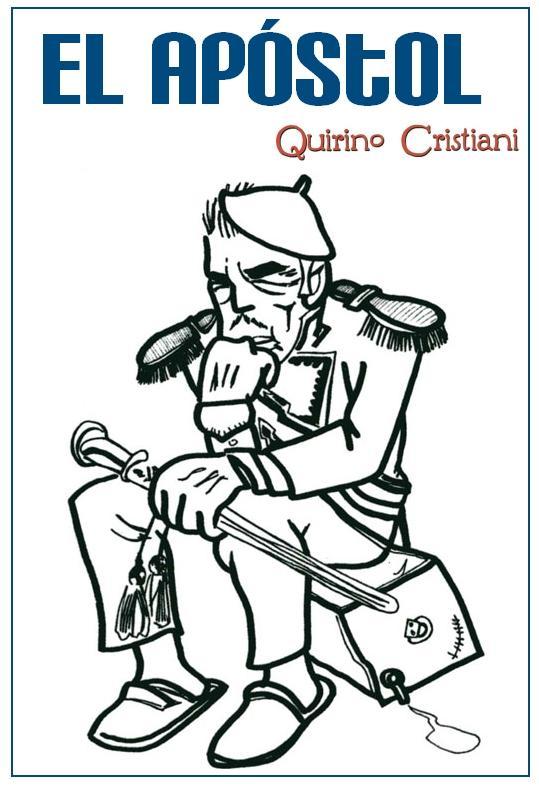
Quirino Cristiani was an Argentine animation director and cartoonist. He made two of the first animated movies, and the first animated movie with sound.
He was also the first person to use cardboard cut outs to animate.
El Apóstol was a political satire based on Argentina's then-president Hipólito Yrigoyen. The plot is that Yrigoyen dreams about going to Mount Olympus and discussinf politics with the gods before using Zeus's lighting bolt to cleanse Buenos Aires of corruption.
The film was a secsessful. But sadly it was distroyd in a fire in 1926.

The next animated feature film was made by Ouirino Cristiani too. It's Sin dejar rastors (Without a Trace in English), from 1918

The plot is about the German commander Baron von Luxburg who sank an Argentine ship inteding to frame the Entete for it.
The film was not as sucsessful as El Apóstol, because it was confiscated by the Ministry of Forgeign Affairs by the order of President Hipólito Yrigoyen. It is unknown that any other copies of the movie were ever made. Becuase of this, it's considerd lost.


The next movie after this is Vida y milagros de Don Fausto (The Life and Miracles of Jiggs in English) by Carlos Espejo and Carlos F. Borcosque from 1924.

Carlos F. Borcosque was a Chilean film director and screenwriter. He is notable for his work during the Golden Age of Argentine cinema.
He established his studio Estudios Cinematográficos Borcosque in 1922, and directed several Chilean silent movies before he moved to Hollywood, where he worked as a consultant on Latin.based movies and had a spell working for Paramount Pictures.
There is not information about Carlos Espejo. The only person that I found with this name was an Olympic swimmer, but seeing how that person was born in 1923, he can't be the one who had a hand in making this movie.
Vida y milagros de Don Fausto was the first Chilean animated movie, the third film Borcosques dicrected, and it's based on the Bringing up Father comic strips.
It opened at the Septiembra and Brasil theatres of Santiago in 1924. september. It was a major succsess, and an "extraordinary comedy".
The movie is possably lost.
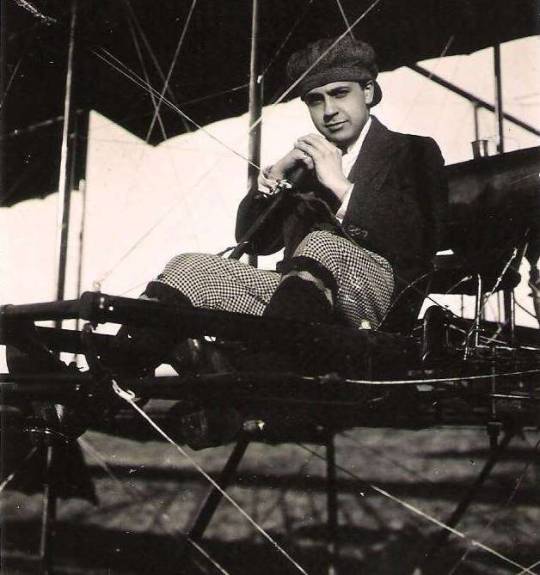
The next one is the oldest surviving animated feature film. The Adventures of Prince Achmed by Lotte Reiniger, from 1926.

Lotte Reiniger was a German film director, and a pioneer of silhouette animation.
She is also noted for having devised, from 1923 to 1926, the first form of a multiplane camera, wich is one of the most importent tools in animation, before digital animation was invented.
Also she worked on more then 40 films durring her career.
The Adventures of Prince Achmed is about Prince Achmed riding a flaying horse to faraway lands, and having adventures, which include befriending a witch, meeting Aladdin, fighting demons, and falling in love with a princess.


The next film is the first animated feature film to use sound. It's Peludópolis (Peludo City in English) by Ouirino Cristiani from 1931.
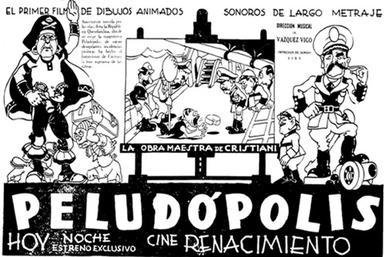
Peludopolis was a political satire focusing on the then-Argentinian President Hipolito Yrigoyen as he floated around in his boat "Pleudo City" which symbolizes Argentina, whaile being harassed by hungry sharks that represent radicals.
In both 1957 and 1961, fires broke out where Cristiani stored his films, which destroyed most of his work, which included the only known copy of Peludópolis. Therefore the movie is lost.

The animated movie after this is the first animated feature film that was made in the Soviet Union. It's The New Gulliver by Aleksandr Ptushko, from 1935.
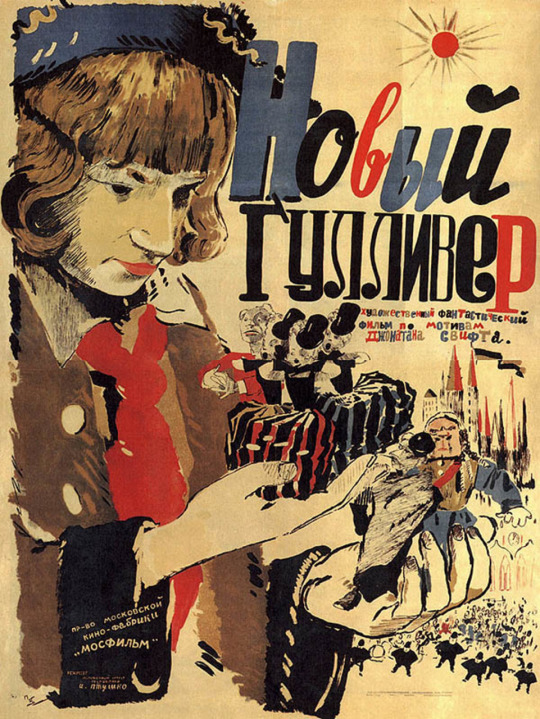
Aleksandr Ptushko was a Russian Soviet animation and fantasy film director, and a People's Artist of the USSR.
He is a lot of the times referd to as the "Walt Disney of Soviet animation", because of his controbrution to early Soviet animation.
The New Gulliver is a combination of stop motion and live action.
The movie is a Communist re-telling of Jonathan Swift's nopel Gulliver's Travels. The be more ext it covers the first part of the book where Gulliver is in Lilliput.
The story is about a young boy who dreams of himself as a version of Gulliver who has landed in Lilliput, which suffering under a capitalist inequality and exploitation.
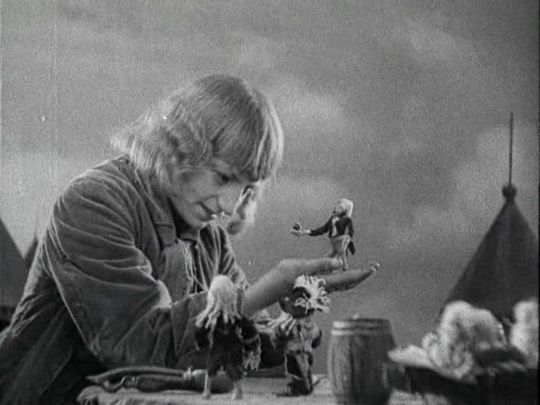
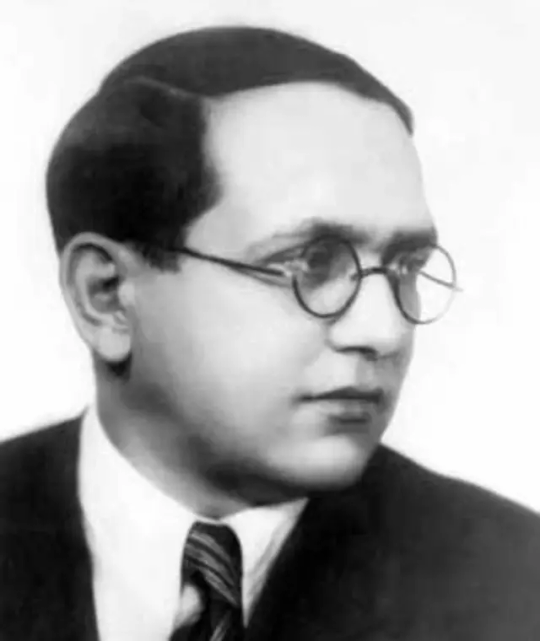
The next one is the first French animated feature film. It's The Tale of the Fox by Ladislas Starevich from 1937.

Ladislas Starevich was a Polish-Russian stop-motion animator. He was the author of the first puppet-animated film The Beautiful Leukanida. He also used dead insects and other taxidermy animals as protagenist in his stop motion short films.
After the Russsian Revolution he moved to France.
The Tale of the Fox was originaly completed in 1930, but there were problems with the French soundtracks, so the movie's premiered with the German soundtrack in 1937, and years later in 1941 it premierd with the French soundtrack.
The movie is about that in the kingdom of animals, the fox Renard is used to triking and making a fool out of everyone. So because of him the King, who is a lion, receives more and more complaints about him. So finally, he order Renard to be arrested and brought before the throne.
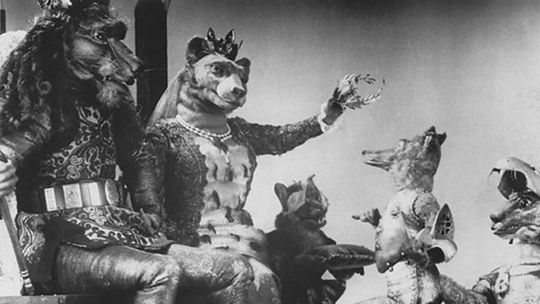
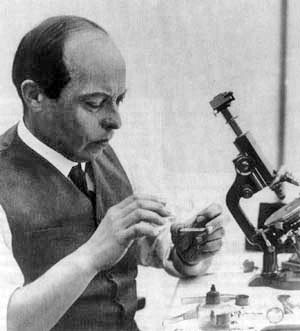
The next one is Academy Award Review of Walt Disney Cartoons, by Burt Gillett, Wilfred Jackson, and David Hand, from 1937.

Bruton F. Gillett was an American animation director. He is most well known for his works on Silly Symphonies for Disney. Particularly the 1932 short film Flowers and Trees, ant the 1933 short film Three Little Pigs, both of wich were awarded the Academy Award for Best Animated Short Film.
Wilfred Emmons Jackson was an American animator, musical arranger and director. He worked as an animator and was instrumental in developing the Mickey Mousing technique, which synchronized the music and action for Steamboat Willie. He then become a director for Mickey Mouse, and Silly Symphonies. He directed the Academy Awards winning short films: The Tortoise and the Hare, The Country Cousin, and The Old Mill.
David Dodd Hand was an American animator and animation filmmaker. He worked as a supervising director on Snow White and Bambi.
The movie was a packige of Academy Awards winning Disney short films in order to promote the then up coming Snow White.
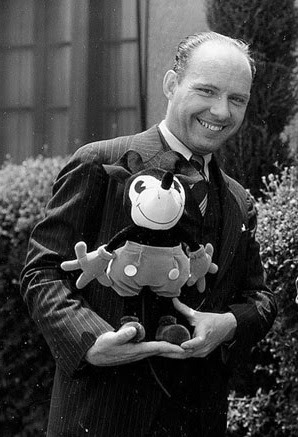


And the last but not least. The movie that premierd 19 days before Snow White. It's The Seven Ravens by Ferdinand Diehl and Hermann Diehl from 1937, december 2.

The Diehl brothers were filmmakers in Munich who were known for their stop motion fairy-tale movies and their most famous character, a hedgehof named Macki. There is little information about the two.
The mocie is based on a Grimm's fairy tale. The story is anput a girl who goas on a quest to save her seven brothers, that were transformed into ravens shortly after her birth, and to complicate matters she has to remain mute.



So no. Snow White was not the first animated feature movie. Just the first one to use cels.
#animation#animation history#history#Disney#snow white#Creation 1916#Pinto Colvig#El Apóstol#Ouirino Cristiani#Sin dejar rastors#Vida y milagros de Don Fausto#Carlos Espejo#Carlos F. Borcosque#The Adventures of Prince Achmed#Lotte Reiniger#Peludópolis#Peludo City#The New Gulliver#Aleksandr Ptushko#The Tale of the Fox#Ladislas Starevich#Academy Award Review of Walt Disney Cartoons#Bruton F. Gillett#Wilfred Emmons Jackson#David Dodd Hand#The Seven Ravens#Diehl brothers
14 notes
·
View notes
Text
ON FIRE Stop-motion 1950 train film by Henry Charles Fleischer. (1398)

source: tumblr dorkvader / nemfrogfilms Apr 28, 2019 taken from Internet Archives who in turn turned-to ...
A silent stop-motion animation film showing a day and night in the life of a model town and the railroads that serve it, circa early 1950s. An early experimental color film with a combination of stop-motion animation and live action. It was produced by cameraman Henry Charles Fleischer (1925-2010).
Watch this amazing short film ...
youtube
1-Link https://youtu.be/gLOM1D6Wjho
One of Fleischer's notable works is "West Coast 1968," a home movie that captures a road trip through the Midwest, Great Plains, and Oregon.
youtube
2-link https://youtu.be/RCvjFrF1Ud8
Another of Fleischer's notable works is "Camera Eye on New Jersey," a sponsored film about infrastructure and industry in New Jersey.
youtube
3-link https://youtu.be/nUCOlvGO1O8
Henry Charles Fleischer (1925-2010)
Henry Charles Fleischer was a filmmaker who is known for his contributions to both amateur and professional film environments. He founded his company, Henry Charles Studios, around 1950. The company mainly produced sponsored and industrial films for several New Jersey-based corporations and organizations, such as Johnson & Johnson, New Jersey Bell Telephone, and the Cape May County Convention & Visitors Bureau.
youtube
4-link https://youtu.be/jFwxUPUljI4
Fleischer’s work includes documenting life and travels through personal films and home movies. Some notable works are recordings of the 1960 Flaherty Foundation Seminar and a stop-motion film about model railroads. He continued to create films throughout his life.
youtube
5-link https://youtu.be/N6k3WSrsbtM
What is the Prelinger Archives
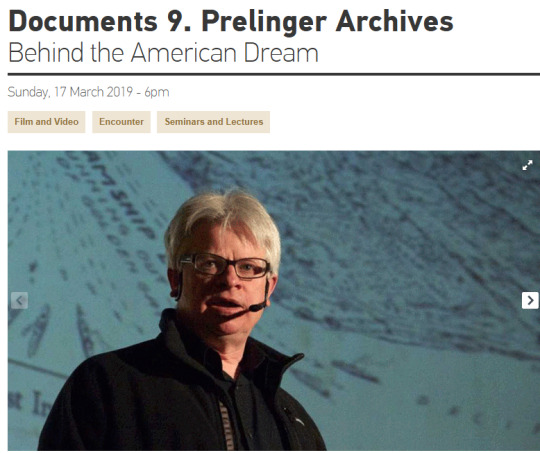
Rick Prelinger. Photo by David Gallagher, Freep Festival, Detroit, 2015 GO TO ARTICLE at Actividad - Documents 9. Prelinger Archives - Behind the American Dream
The Prelinger Archives is a collection of films relating to U.S. cultural history, the evolution of the American landscape, everyday life, and social history. Originally based in New York City from 1982 through 2002, it is now based in San Francisco.
The Archives were founded by Rick Prelinger in 1982 to preserve what he calls "ephemeral" films: films sponsored by corporations and organizations, educational films, and amateur and home movies. Typically, ephemeral films were produced to fulfill specific purposes at specific times, and many exist today only by chance or accident. About 65% of the Archive's holdings are in the public domain because their copyrights have expired, or because they were U.S. productions that were published without proper copyright notice.
The stated goal of the Prelinger Archives is to "collect, preserve, and facilitate access to films of historic significance that haven't been collected elsewhere" Continue reading at Wikipedia
West Coast,1968,Camera Eye on New Jersey,Branch Brook Park,camera eye,Florida, Prelinger Archives
#1398#Charles Fleischer#short film#Stop-motion train film#1950#West Coast#1968#Camera Eye on New Jersey#Branch Brook Park#camera eye#Florida#Prelinger Archives#2025-04-15
9 notes
·
View notes
Text
Strong winds
ROBERT REICH
DEC 12
Friends,
I’m sitting in the United Airlines terminal at the San Francisco airport. The plane I was scheduled to travel to Newark, New Jersey, has already been delayed three times. It was scheduled to depart at 1 pm. It’s now departing at 4:40 pm.
They’re blaming strong winds in the Northeast. But another United scheduled to depart at 2:30 pm just took off on time. I asked the service attendant why the 2:30 pm to Newark had departed despite strong winds. He explained that the real problem wasn’t strong winds; it was a lack of air traffic controllers in Newark. My suspicion is United is trying to minimize the number of late flights; rather than risk two, it sacrificed my 1 pm.
I asked the attendant if he thought my flight will actually depart at 4:40, because I have to get to a Hilton Hotel in Elizabeth, New Jersey by early enough to get a few hours sleep before attending meetings tomorrow morning. The attendant said “there are no guarantees. This flight could depart anytime, or it could be cancelled.”
When I phoned the Hilton Hotel in Elizabeth, New Jersey, to tell them I’d be checking in very late tonight, I got a menu that told me to “press 2” to change or modify a reservation. When I pressed 2, an automated voice said I could not change my current reservation but could make a new reservation. The automated voice also said if I was experiencing any difficulty I should go to the Hilton website.
I found the Hilton website, which asked me to fill in reservation number. But I didn[t have a reservation number. When I reserved a room, Hilton had given me a confirmation number but not a reservation number. I typed in the confirmation number but the website said the confirmation number was incorrect.
I spent the next half hour trying to find a human being at the Hilton Hotel to ask them to keep the room for me despite my lateness. Finally, I connected with someone who didn’t understand what I was asking. I asked them where they were located. They said they were not permitted to say.
It’s now 3:35 pm and I’m still sitting here in the United terminal in San Francisco. The customer service person I just spoke with told me the plane “may or may not take off.” I’m about to phone the people I was to meet with tomorrow to tell them I won’t be there.
I relate this to you because I’ve been thinking a lot lately about the frustrations that might drive people to vote for a strongman who promises to “shake things up” even if he’s intent on destroying our democracy, or might cause people to cheer for someone who murders the CEO of a giant health insurers.
United Airlines is one of four remaining national carriers (there were ten in 2000). In the third quarter of 2024, had pre-tax earnings of $1.3 billion, with a pre-tax margin of 8.7%. In other words, it’s doing fabulously well.
Hilton Hotels is almost as profitable. In fact, its net operating profits have shot up from what they were a year ago. It’s also doing fabulously well.
Big American corporations are doing better than ever. The stock market has hit record highs. CEO pay is hitting new highs.
But American workers and consumers are being shafted with lousy service at ever more expensive prices.
Something’s got to give. Right?
7 notes
·
View notes
Text
Just watched How I Met Your Mother fully for the first time. My thoughts:
Every time they gave Barney character development and growth they then take him three steps back, which is annoying. Let him develop a real personality beyond a horny cringe teenager in a grown man’s body!!!!
Honestly, I relate to Ted’s yearning for love and romance to the point of being delulu. Me too Ted. Also, as a horn player, if someone stole me a blue French horn, I would be married to them on the spot lol
Although I don’t hate her, I do not like Lilly (even though she has great moments too). From wanting to get hit on by men that aren’t Marshall, to dipping to San Francisco, to lowkey lusting after Robin, to being bleh after Marshall first got offered a job as a judge…idk so many icks. Like dang girl, you have your whole life to travel and live in Italy, it ain’t that deep. Many parents sacrifice travelling until their kids are off to college
Robin, my beloved Robin, you are so perfect my beautiful meow meow. Idc about your flaws, you’re a star who always knew what she wanted❤️ I wish they did not ruin her ending by putting her with Ted.
I wish they spent more time developing the storyline of the mother, Tracy. Season 9 felt so rushed after waiting for ages to finally meet her. We don’t get to see Ted do much grand gestures for her compared to his past ex partners. Makes me sad since she was the perfect fit for Ted.
The show has led me to embrace the chaos that is my late 20’s while wrapping up law school like Marshall.
Marshall’s law storyline is lowkey so common…go to law to save the world and end up working in corporate to afford a stable family life. This happens a lot since the recruitment pipeline into Big Law is much more visible and straightforward compared to workplaces that focus more on public interest issues. I like that the show did not villainize Marshall for this and showed his emotional struggles.
On the law note, a lawyer would never sneak into another firm to steal intel. Yes it is a fictional show but I was like bruh you would get rekt by the Bar Association so fast for breaking the code of ethics
The timeline jumping and changing of narrators was often too hectic imo
Overall I love the show for how it developed crazy weird background lore for each character. Would watch again lol
3 notes
·
View notes
Text
Eric Levitz at Vox:
In January 2017, Sergey Brin rallied beside progressive activists at San Francisco International Airport to protest Donald Trump’s travel ban. Eight years later, the Google co-founder sat with right-wing nationalists at Trump’s second inauguration. Brin is far from the only tech mogul who has (apparently) warmed to Trump in recent years. Mark Zuckerberg once bankrolled liberal causes. Now, the Facebook founder dines with America’s favorite insurrectionist at Mar-a-Lago. In 2016, Marc Andreessen argued that Hillary Clinton was the “obvious choice” for president, and that any proposal to choke off immigration “makes me sick to my stomach.” Last year, Andreessen endorsed Trump. And, of course, Elon Musk has gone from being an Obama-supporting climate hawk to quite possibly the single most influential advocate for — and patron of — far-right politics in the United States.
The Rebuild
Silicon Valley’s apparent rightward shift was already causing consternation in blue America last year. But Democrats’ outrage and anxiety over the red-pilling of Silicon Valley has only increased since Inauguration Day — when Brin, Zuckerberg, Musk, Jeff Bezos, Alphabet CEO Sundar Pichai, and Apple CEO Tim Cook all sat with Trump’s camp in the Capitol Rotunda. Some Democrats view Big Tech’s rightward lurch as a political crisis, one brought on by their own party’s policy mistakes. In this account, Democrats needlessly alienated a powerful industry by embracing an anti-corporate economic agenda that is both politically costly and substantively misguided. Others in the party, meanwhile, insist that the Biden administration’s attempts to tame Big Tech’s power were both good politics and good policy. In their telling, voters hate corporate monopolies and love antitrust enforcement. And the extraordinary wealth and power of large tech companies constitute a threat to democratic government — a reality that Silicon Valley’s present chumminess with Trump only underscores. From this vantage, the tech industry’s interests and the general public’s were always irreconcilable. And as Silicon Valley grew wealthier, it was bound to gravitate toward America’s more pro-business party. The Biden administration’s error, therefore, was not doing too much to antagonize Big Tech, but too little.
This debate collapses together several distinct questions. Some of these are ideological — such as whether the Biden administration’s approach to antitrust enforcement was worthwhile on the merits. Today though, I want to focus on two factual questions at the center of the intra-Democratic dispute over Big Tech:
How and why did the tech industry’s politics change during the Biden era?
Would it be politically damaging — or beneficial — for Democrats to maintain (or build upon) Joe Biden’s approach to regulating the tech industry?
I think the answers to both these questions are more complicated than either progressive or pro-business Democrats allow.
Why tech moved right
To understand why Silicon Valley has moved right in recent years, it’s helpful to consider what had previously tethered the industry to the center-left. Many in the tech world argue that Silicon Valley and the Democratic Party were long bound by an implicit “deal”: Democrats would support the development of new technology, celebrate entrepreneurs, and take a light touch approach to regulating the digital sphere — in exchange for tech moguls backing socially liberal causes, progressive taxation, incremental expansions of the welfare state, philanthropies, and Democratic candidates. This was a pretty good bargain for the typical tech founder — since it effectively entailed the Democratic Party embracing nearly all of their preferences. Survey data on the views of Silicon Valley moguls is limited. But a 2017 study of tech entrepreneurs’ politics found that they were left-leaning on almost all issues — including taxation and redistribution — but quite right-wing on questions of government regulation and labor unions. This distinct ideological profile has been dubbed “liberal-tarian.” Given that Democrats have always been the party more supportive of regulating industry and promoting organized labor, the party’s alliance with tech was long fraught with some tension. But in recent years, both sides began souring on their supposed contract for a variety of reasons.
[...] After the financial crisis, the party’s progressive wing grew more influential. And its ascent increased the salience of both inequality and labor issues in Democratic politics. For a party increasingly concerned with wealth concentration and workers’ rights, tech giants that generated vast fortunes off “winner-take-all” markets — while, in many cases, committing labor violations or undermining traditional employment — did not look like engines of progress. As importantly, the notion that social media platforms promoted democracy and social reform fell into disrepute. In the wake of Obama’s election and the Arab Spring — both of which were widely credited to novel media technologies — many liberals bought into the idea that Facebook and Twitter would abet a more egalitarian politics. But authoritarian regimes proved adept at restricting online speech. And if social media’s potential to facilitate rightwing extremism wasn’t clear to liberals before 2016, it was apparent to them afterward. Following Trump’s victory, many Democrats blamed their party’s defeat on Facebook’s dissemination of “fake news.” Around the same time, research suggesting that social media could have adverse mental health effects started to accumulate. All this — combined with tech platforms’ adverse impact on traditional journalism — led the mainstream media to view Silicon Valley more critically. Between 2012 and 2019, the New York Times’ coverage of Facebook turned sharply negative, according to one prominent data analysis. Add in Silicon Valley’s growing enthusiasm for crypto — a technology that appeared to be good for little beyond scams and speculation — and it isn’t hard to see why Democrats soured on Big Tech. The party’s newfound skepticism of the industry didn’t just translate into greater regulatory scrutiny, but also, a withholding of both praise and access. According to some in tech, the sector’s leading lights felt themselves shunned and slighted by the Biden White House. “I think the fundamental problem, and I heard this from many, was that former President Biden was unwilling to meet with tech CEOs and entrepreneurs,” the billionaire investor Mark Cuban told me. “It was that simple.” One former Biden official echoed this assessment, saying that tech companies “couldn’t get meetings with a lot of the key regulators. Certainly [FTC commissioner] Lina [Khan] wouldn’t meet with people — she liked to say, ‘We’re enforcement, you can’t really meet with us.’”
This piece in Vox is a must-read on how portions of Big Tech turned rightwards in recent years, being from backing Hillary in 2016 and funding progressive causes (at least socially) to backing Trump and his reactionary far-right agenda. Elon Musk and Marc Andreessen are a couple of examples of this shift.
#Big Tech#Silicon Valley#Right Wing Extremism#Elon Musk#Jeff Bezos#Sergey Brin#Sundar Pichai#Marc Andreessen#Mark Zuckerberg#Tim Cook
5 notes
·
View notes
Text
What is your favourite Doctor Who story?

ROUND 1 MASTERPOST
synopses and propaganda under the cut
Vampire Science
Synopsis
In the days when the Time Lords were young, their war with the Vampires cost trillions of lives on countless worlds. Now the Vampires have been sighted again, in San Francisco. Some want to coexist with humans, using genetic engineering in a macabre experiment to find a new source of blood. But some would rather go out in a blaze of glory — and UNIT's attempts to contain them could provoke another devastating war.
The Doctor strikes a dangerous bargain, but even he might not be able to keep the city from getting caught in the crossfire. While he finds himself caught in a web of old feuds and high-tech schemes, his new companion Sam finds just how deadly travelling with the Doctor can be.
Propaganda
I could say many things about this book, but honestly the fact that there’s a vampire snail is enough (anonymous)
you know that meme with the wikipedia page that's like "instead of brain there is [insert thing here]"? that was me after reading this. it's extremely good (anonymous)
vampire crack squirrels. (@eighthdoctor )
Camp! And! Vamp! Also 8 keeps getting swarmed by kittens (anonymous)
Alien Bodies
Synopsis
On an island in the East Indies, in a lost city buried deep in the heart of the rainforest, agents of the most formidable powers in the galaxy are gathering. They have been invited there to bid for what could turn out to be the deadliest weapon ever created.
When the Doctor and Sam arrive in the city, the Time Lord soon realises they've walked into the middle of the strangest auction in history — and what's on sale to the highest bidder is something more horrifying than even the Doctor could have imagined, something that could change his life forever.
And just when it seems things can't get any worse, the Doctor finds out who else is on the guest list.
Propaganda
Doctor ends up at an auction for his own dead body (anonymous)
One of the most notable Eighth Doctor books, the first by Lawrence Miles and the beginning of Faction Paradox. Generally very good. (anonymous)
Banger of a story where 8 goes to an auction in order to purchase 3's dead body. Then the weird shit starts happening. (@eighthdoctor )
Seeing I
Synopsis
He has no idea why Samantha Jones ran away from him.
Sam is homeless on the streets of the colony world of Ha'olam, trying to face what's just happened between her and the Doctor. He's searching for her, and for answers. While she struggles to survive in a strange city centuries from home, the Doctor comes across evidence of alien involvement in the local mega-corporation, INC — and is soon confined to a prison that becomes a hell of his own making.
Where did INC's mysterious eye implants really come from? What is the company searching for in the deserts? What is hiding in the shadows, watching their progress?
Faced with these mysteries, separated by half a world, Sam and the Doctor each face a battle — Sam to rebuild her life, the Doctor to stay sane. And if they find each other again, what will be left of either of them? "
Propaganda
did you want 8 slowly breaking down under extended mental torture? of course you did. also eye gore. (@eighthdoctor )
The Scarlet Empress
Synopsis
Arriving on the almost impossibly ancient planet of Hyspero, a world where magic and danger walk hand in hand, the Doctor and Sam are caught up in a bizarre struggle for survival.
Hyspero has been ruled for thousands of years by the Scarlet Empresses, creatures of dangerous powers — powers that a member of the Doctor's own race is keen to possess herself: the eccentric time traveller and philanderer known only as Iris Wildthyme.
As the real reasons for Iris's obsession become clear, the Doctor and Sam must embark on a perilous journey across deserts, mountains, forests and oceans. Both friends and foes are found among spirits, djinns, alligator men and golden bears — but in a land where the magical is possible, is anything really as it seems?
Propaganda
features my favourite couple of all time, a giant spider and a cyborg who fall in love and fuse into one giant ice spider robot. and they were both girls (it is also a beautiful story about stories themselves and the regulars are at their best) (anonymous)
Unnatural History
Synopsis
"They called it the Millennium Effect", said the Doctor. "But the millennium was only beginning."
San Francisco has changed since the start of 2000. The laws of physics keep having acid flashbacks. There are sightings of creatures from outside our dimensions, stranded aliens and surrealist street performers. The city has become a mecca for those who revel in impossible creatures — and those who want to see them pinned down and put away.
Sam's past is catching up with her — a past she didn't know she had. The Doctor is in danger of becoming the pièce de résistance in a twisted collection of creatures. And beneath the waters of the Bay, something huge is waiting.
With time running out, the Doctor must choose which to sacrifice — a city of wonders, or the life of an old and dear friend.
Propaganda
You too want to read a full novel explanation of why Dr Who canon is Like That (hint: it's little assholes who opt to look like 10 year olds wearing skull masks). Also unicorns in San Francisco. Unsurprisingly does feature Fitz being astoundingly gay for 8. (@eighthdoctor )
The villain of the week wants the Doctor to have a consistent backstory. This is bad because it’s not Doctor Who without plotholes and inconsistencies. Plus, it was published in 1999 (?) and there’s a line about how Gallifrey is always destroyed and un-destroyed. They didn’t even know… (anonymous)
Interference
Synopsis
Five years ago, Sam Jones was just a schoolgirl from Shoreditch. Of course, that was before she met up with the Doctor and found out that her entire life had been stage-managed by a time-travelling voodoo cult. Funny how things turn out, isn't it?
Now Sam's back in her own time, fighting the good fight in a world of political treachery, international subterfuge, and good old-fashioned depravity. But she's about to learn the first great truth of the universe: that however corrupt and amoral your own race might be, there's always someone in the galaxy who can make you look like a beginner.
Ms Jones has just become a minor player in a million-year-old power struggle... and as it happens, so has the Doctor.
Both of him, actually.
Propaganda
Father Kreiner war crimes because they are so in love with the Doctor and so depressed they want to die Romeo and Juliet style. Oh and it is the superior third Doctor regeneration story. (Anastasia Cousins)
39 notes
·
View notes
Text
Wonder Woman TV Show Plans pt. 3 (my edit and revision of my old ideas):
Season Three: Billed as the "Adventures of the New Wonder Woman," this season would focus on Wonder Woman and her new life as a martial artist and clothing store owner in San Francisco. Being trained by an old blind asian man who only goes by I Ching, Diana reinvents her life while suffering from amnesia. This season would get around 26 to 27 episodes. Long enough to have some fun with the new spy fiction concept, but short enough so that we can restore the status quo shortly hereafter.
This season would be like an animated version of James Bond, Mission: Impossible and all those other spy fiction style shows. Diana and I-Ching solve international crimes. They deal with a new global terrorist going by the name of Doctor Cyber. Slowly, Diana's memories return to her. But in the meantime, we also slowly learn about I-Ching and his backstory. And we get introduced to characters like Yara Flor and Artemis of Bana-Mighdall, members of tribes that broke away from the amazons of themyscira. They'd become characters who guest star a handful of times over the course of the season. Maybe Martian Manhunter and Etta Candy would return for a few episodes too.
But mainly, this season of spy fiction and global intrigue would have one villain: Doctor Cyber/Veronica Cale. Yes, i know they're seperate characters in the comics. But come on. It just makes sense for them to be one and the same. The rich corporate woman is also the head of a global terrorist organization. It just works, in my opinion. So she'd be the main villain of this season. This rich woman with no scruples, obsessed with money and attention. She represents pride and vanity and greed, and she's a condemnation of what capitalism can drive people to become.
Doctor Cyber would have many subordinates serving under her. A lot of them would end up being original characters, but there's some old Wonder Woman rogues from seasons one and two in here too. Like Doctor Psycho, Angle Man and Cheetah, for instance. Those three are involved. The Silver Swan would also be introduced in this season, since I think this season's bronze age comics vibe is the perfect time to add her to the series. She could debut in season two, though. I haven't decided. All that this paragraph really needs to let you know is that old villians and new ones alike are showing up in season three.
But the season itself would end on a two or three part episode, wherein Diana discovers Veronica is Doctor Cyber, and then successfully destroys all her plans for world domination (and veronica seems to die as her secret base of operations in the mountains of europe blows up). With Doctor Cyber seemingly gone, Diana and I Ching have completed their mission. And coincidentally, a genie from the fifth dimension shows up to ask Wonder Woman's help in liberating themyscira from the fifth dimension. So Diana bids farewell to I Ching and heads off into the fifth dimension.
Season Four: The beginning of our two mini seasons. Season Four is all about Wonder Woman and Genro traveling the Fifth Dimension, and it's around twelve or thirteen episodes long. It's a weird season, one that's short but still has time to tell two unique stories within it. So i'd say the season should still stand on it's own, despite the shorter episode count.
Wonder Woman and Genro the Genie travel through the fifth dimension, hoping to save paradise island from any troublesome beings who live there. Genro is one of the only polite fifth dimensional inhabitants, and he was most disturbed when themyscira landed right in his back yard. He actually grew to like the people stuck there, but he knew he couldn't leave it in his back yard. Hence him going to find Wonder Woman.
Wonder Woman still has no powers, as a direct result of circe's curse. But genro lends Diana some of his power, so she's able to successfully travel through the fifth dimension with him. On their quest to rescue themyscira, these two would run into all sorts of imps and other fifth dimensional beings. Characters like Bat-Mite and Mister Mxyzptlk would hinder Wonder Woman and Genro, but they continue on with their quest anyways.
But around halfway through the season (let's say around the eight or nine episode mark) Wonder Woman and Genro finally free themyscira from the fifth dimension. Diana manages to trick Circe into returning her powers to her, but Circe also successfully flees the fifth dimension, bringing themyscira back to it's proper place (but also allowing her to return and plot a new trap for wonder woman on earth). As circe is fleeing, she also casts a spell to banish wonder woman to a far flung dimension. This cliffhanger would lead into season five, our second miniseries season.
Season Five: Our second mini season, wonder woman ended season four being banished to a far flung dimension. Now, she wakes up on a parallel earth somewhere new in the multiverse, lost with no way of finding her way home. The earth she's fallen into is one where she came to earth in the 1940s, instead of in the present day. On this earth, diana and steve got married and had a child. It's now the 1970s or 1980s here, and diana has to team up with her alternative universe daughter, Hippolyta "Lyta" Trevor.
So this miniseries lasts around twelve or thirteen episodes, same as the previous one. Wonder Woman ends up having to go on adventures with the Justice Society of America and Infinity Inc as she tries to find a way back to her home dimension. She'd get to meet an older version of herself, as well as older versions of all of her friends. It's a very surreal experience for Diana, especially since she's also worried about what Circe is doing back on the main dimension.
So after a couple of months stuck on earth-two, helping her alternative self's daughter fight crime, the JSA finally finds a way to get Wonder Woman sent back to her home dimension. So with some tearful goodbyes (hopefully only temporarily), diana leaves earth-two behind to return to her earth and stop circe.
#wonder woman#diana prince#diana of themyscira#i can't believe i made all of this on short notice#but i did#over two days#i just wrote all this#dc ideas#dc comics#comic books#comics#my ideas#ideas#story ideas#show ideas#tv show ideas#fic ideas#doctor cyber#veronica cale#steve trevor#yara flor#artemis of bana mighdall#idea posts#dc#dc universe#dcu#fury#lyta trevor#justice society of america#jsa
5 notes
·
View notes
Text
As Brian Chesky tells it, the reinvention of Airbnb started with the coup at OpenAI. On November 17, 2023, the board of OpenAI fired company CEO Sam Altman. His friend Chesky leapt into action—publicly defending his pal on X, getting on the phone with Microsoft’s CEO, and throwing himself into the thick of Altman’s battle to retake OpenAI. Five days later Altman prevailed, and Chesky—“I was so jacked up,” he says—turned his buzzing mind to his own company, Airbnb.
Thanksgiving weekend was beginning. The Chesky extended family had already held their turkey get-together a week earlier, and the Airbnb CEO had no holiday plan. He was completely alone in his sprawling San Francisco apartment except for Sophie, his golden retriever.
Still wired out of his mind from the cathartic corporate rescue, Chesky began to write. He wanted to bust the company he’d cofounded out of its pigeonhole of short-term home rentals. Amazon, he was fond of pointing out, was first an online bookstore before it became the everything store. Chesky had long believed that Airbnb should expand in a similar way. But things kept getting in the way—dealing with safety issues, fighting regulation, coping with the existential crisis of a global pandemic. The company was in danger of being tagged with the word that ambitious entrepreneurs dread like the plague: mature.
Now Chesky was emboldened to lay out his vision. Home rentals are simply a service, so why stop there? Airbnb could be the platform for booking all sorts of services. While other apps cover specific sectors—food delivery, home maintenance, car rides—Chesky figured that Airbnb’s experience in attractively displaying homes, vetting hosts, and responding to crises could make it more trustworthy than competitors and therefore the go-to option for virtually anything.
In a frantic typing spree at the dining room table, on the couch, the bed, and at times in his office, Chesky specced out how he would redesign the Airbnb app. Its users—now at 2 billion—would open up the app not only at vacation time but whenever they needed to find a portrait photographer, a personal trainer, or someone to cook their meals. Chesky reasoned that Airbnb would need to significantly strengthen its identity verification. He even thought he could get people to use the app as a credential, something as respected as a government-issued ID. If he could transform Airbnb into a storefront for real-world services, Chesky thought, he’d catapult his company from a nearly $10-billion-a-year business into one that boasted membership in tech’s pantheon.
Over the next few days, Chesky spilled these thoughts into an Evernote document. “I was basically going from room to room just pouring out this stream-of-consciousness manifesto, like Jack Kerouac writing On the Road,” he says, referring to the frenetically produced single roll of teletype paper that catalyzed the beat movement. “I dusted off all my ideas from 2012 to 2016,” Chesky tells me. “I basically said, ‘We’re not just a vacation app—we’re going to be a platform, a community.’” By Friday he had around 10,000 words, “incomprehensible to anyone but me.” He began to refine it, and by the time the weekend was over, Chesky had distilled his document down to 1,500 words.
PHOTOGRAPH: GABRIELA HASBUN
After the holiday, Chesky gathered his leadership team into a conference room. He handed the team copies of his memo à la Jeff Bezos and waited as his direct reports took it in. “Usually when I share ideas, people aren’t bought in,” he says. “But this time, there wasn’t a lot of feedback. People were really excited. And two years later, that document will now be executed with an exacting detail to what I wrote.”
This month, Airbnb will launch the first stage of its more than $200 million reinvention: a panoply of more than 10,000 vendors peddling a swath of services in 260 cities in 30 countries. It is also revitalizing an unsuccessful experiment the company began in 2016: offering bespoke local activities, or what it calls “experiences.” The next stage, launch date unspecified, involves making your profile on Airbnb so robust that it’s “almost like a passport,” as Chesky puts it. After that comes a deep immersion into AI: Inspired by his relationship with Altman, Chesky hopes to build the ultimate agent, a super-concierge who starts off handling customer service and eventually knows you well enough to plan your travel and maybe the rest of your life.
“Brian’s been badly underrated as a tech CEO,” Altman says of his friend. “He's not usually mentioned in the same breath as Larry Page or Bill Gates, but I think he is on a path to build as big of a company.”
That’s a stretch—Airbnb is nowhere near the size of those oligarchic powers. But Chesky was feeling the need for big changes; While impressive, Airbnb’s growth rate doesn’t suggest that the company will soon reach the trillion-dollar heights of Google and Microsoft. “I’m 43 and at a crossroads, where I can either be almost done or just getting started,” he tells me. “There's a scenario where I'm basically done. Airbnb is very profitable. We've kind of, mostly, nailed vacation rentals. But we can do more.”
In early April, I visited Chesky at the company’s lavish San Francisco headquarters. The relaunch was five weeks away. The second floor—where signs warn employees not to bring visitors—had become a sprawling eyes-only command center. The walls were covered with dozens of large poster boards, each one featuring a city, that read as if a group of McKinsey consultants had tackled a fourth-grade geography assignment. Austin, Texas, was written up as “a funky come-as-you-are kind of place” with a handful of “first principles,” one of which was “Outlaw of Texas,” with pointers to food trucks and vintage markets. Another so-called principle was “Live and Alive,” referring to music venues and bat watching; a third was “Dam Lakes,” referring to various water sports. Other blindingly obvious notations included barbeque, tacos, and the two-step. The Paris poster painted a “revolutionary” city marked by slow living and enduring culture.
Chesky strode up and greeted me enthusiastically. Dressed in a slim T-shirt that exposed his swole physique, he bounced on his heels with a jittery energy that reminded me of the first time I met him, in January 2009. He had just joined Y Combinator’s famous program for startups, and he and his classmates were at a party at the home of YC cofounder Paul Graham. (Graham told me then that he thought Airbnb’s business plan was crazy but was impressed by their determination.) I mentioned to Chesky that I was headed to Washington, DC, for Barack Obama’s inauguration, and he and his cofounders immediately tried to convince me to use their service to sleep on someone’s couch. I declined, but somehow over the next 15 years they managed to sell the idea to 2 billion people, including me, and now the company has a market cap worth more than Marriott.
Chesky ushers me into a conference room to get a preview of the new Airbnb app. His engineers and designers have rebuilt the app from scratch, and he waves around a stick of lip balm as a talisman as he talks me through the redesign. Also in the room is his product marketing head, Jud Coplan, while his vice president of design, Teo Connor, Zooms in from London. While customers likely think of Airbnb as a travel company, its leaders view the operation as an achievement in design. Which makes sense; both Chesky and his cofounder Joe Gebbia were students at the Rhode Island School of Design.
Airbnb's new user interface featuring experiences and services.COURTESY OF AIRBNB
Chesky explains that historically, people used Airbnb only once or twice a year, so its design had to be exceptionally simple. Now the company is retooling for more frequent access. Open the app, and you see a trio of icons that act as gateways to the expanded functions. Within minutes Chesky and his lieutenants are applauding the cheery, retro style of the icons—a house for traditional rentals, a hotel bell for services, and a Jules Verne-ish hot-air balloon representing activities. “We really thought deeply about the metaphor—what was the right visual to express an experience?” says Connor. Once they decided on the balloon, they drilled into how much fire should belch from the basket. The icons were drawn by a former Apple designer whose name Chesky would not divulge. “He’s a bit of a secret weapon,” he says.
A less-secret weapon is Chesky’s collaboration with the iconic, also ex-Apple, industrial designer Jony Ive. Chesky’s north star, it should be said, is Apple. “Steve Jobs, to me, is like Michelangelo or da Vinci,” he says. Despite never meeting Jobs, “I feel like I know him deeply, professionally, in a way that few people ever did, in a way that you only possibly could by starting a tech company as a creative person and going on a rocket ship,” Chesky says. By hiring Ive’s LoveFrom company and working with Jobs’ key collaborator, Chesky gets a taste of the famous Jobs/Ive dynamic. Ive himself doesn’t make that comparison, but he does praise Chesky’s design chops. “There are certain tactical things where I hope that sometimes I'm of use to Brian, just as as a fellow designer,” Ive says. “But the majority of our work has been around ideas and the way we frame problems and understand opportunities.”
Another key part of the app is the profile page. “You need trust,” Chesky says—meaning a verifiable identity. Airbnb has been vetting the new vendors, which it calls “service hosts.” For months, Chesky says, an army of background researchers has been scrutinizing the résumés, licenses, and recommendations of chefs, photographers, manicurists, masseuses, hair stylists, makeup artists, personal trainers, and aestheticians who provide spa treatments such as facials and microdermabrasions. They’re all being professionally photographed.
Airbnb's new guest profile interface.COURTESY OF AIRBNB
For the next phase—turning Airbnb’s user profiles into a primary internet ID—Connor and her team have engaged in some far-out experimentation. She rattles off a list of technologies they’ve been exploring, including biometrics, holograms, and the reactive inks used to deter counterfeiting on official ID cards. But it’s far from easy to become a private identity utility (hello, Facebook), and even Chesky notes that getting governments to accept an Airbnb credential to verify identity is “a stretch goal.”
Now that a whole slew of people will have new reasons to chat with each other and coordinate plans, Airbnb has also enhanced its messaging functions. Fellow travelers who share experiences can form communities, stay in touch, even share videos and photos. “I don’t know if I want to call it a social network, because of the stigma associated with it,” says Ari Balogh, Airbnb’s CTO. So they employ a fuzzier term. “We think of it as a connection platform,” he says. “You’re going to see us build a lot more stuff on top of it, although we’re not an advertising system, thank goodness.” (My own observation is that any for-profit company that can host advertising will, but whatever.)
This brings us to the services—the heart and soul of this reinvention. Those now on offer seem designed to augment an Airbnb stay with all the stuff that drives up your bill at a luxury resort, like a DIY White Lotus. It will be interesting to see how the company handles the inevitable cases of food poisoning or bad haircuts (and skeezy customers), but Airbnb can draw on its 17 years of experience with dirty sheets, all-night discos on the ground floor, or a host who is literally terrorizing you. Eventually, Chesky says, Airbnb will offer “hundreds” of services, perhaps as far-ranging as plumbing, cleaning, car repair, guitar lessons, and tutoring, and then take its 15 percent fee.
Crafted cuts by Bryan, Chicago, IllinoisCOURTESY OF AIRBNB; LYNDON FRENCH
Train with Steve Jordan, Trainer to the Stars, Los Angeles, CaliforniaCOURTESY OF AIRBNB; JACKIE BEALE
The other key feature of the company’s reinvention, of course, is Experiences. If the idea sounds familiar, that’s because Airbnb launched a service by that name almost a decade ago, with pretty much the same pitch: special activities for travelers, like architects leading tours of buildings or chefs showing people how to fold dumplings.
It flopped, although Airbnb never formally pulled the plug. Chesky’s excuses include tactical errors: After a big initial splash, the company didn’t follow up with more marketing, and it didn’t establish a strong flow of new experiences. But the big reason, he says, was that it was too early. Now the company has five times as many customers and an ecosystem to support the effort. “It was like our Newton,” says Chesky, referring to Apple’s handheld device that predated the iPhone. (Another Apple reference, for those keeping score.)
Chesky’s crew has arranged for more than 22,000 experiences in 650 cities, including a smattering of so-called “originals,” with people at the top of their field—star athletes, Michelin chefs, famous celebrities. In the pipeline is Conan O’Brien selling a perch behind a mic in his podcast studio. (Don’t expect it to air.) Taking a lesson from his earlier flop, Chesky has planned a steady cadence of these short-term promotional stunts, which, of course, is what the Conan experience ultimately is. “We’re going to have thousands of originals and maybe one day hundreds of thousands—a regular drumbeat of some of the biggest iconic celebrities,” Chesky says.
He shows me how someone could take a trip to, say, Mexico City and book experiences instantly. “Fun fact—I’ve always dreamed of being a professional wrestler in Mexico. I want to be a luchador!” he tells me, then immediately regrets it. Regardless: In an Airbnb experience, he says, you can meet a real luchador, get in the ring with him, and learn some moves. Can you keep the mask?
“Probably,” says Chesky. In any case, you’d share the photos with others in your group. (But don’t call it a social network.)
Megan Thee Stallion in Los Angeles, CaliforniaCOURTESY OF AIRBNB; ADRIENNE RAQUEL
Horseback riding through four hidden temples of the Inkas, Cusco, PeruCOURTESY OF AIRBNB; PAZ OLIVARES-DROGUETT
Airbnb’s planned transformation tracks with another reinvention: that of its leader.
Chesky had originally taken the title of CEO over his two pretty-much equal cofounders because his personality was more forward facing—it wasn’t even formalized until 2010. But then, in 2011, the company had its first real crisis when a host publicly shared a horror story about how an Airbnb guest from deep, deep hell pillaged and trashed her home. What wasn’t stolen—the customer broke into a locked closet to grab a passport, cash, and heirloom jewelry—was ravaged and burned in the fireplace. “The death-like smell from the bathroom was frightening,” wrote the host. The story threatened to destroy the cheerful person-to-person vibe the company had cultivated. It didn’t help that Airbnb’s initial response was clueless and weak.
Chesky stepped up to become the face of the company and instituted overdue safety protocols. Over the next few years, Chesky cemented his alpha status. In 2022 his cofounder Joe Gebbia stepped down from daily duties, though he still sits on the board. (Recently Gebbia has been in the news for his very public participation in DOGE’s remaking of the US government. When asked about it at a Q and A session with employees, Chesky said that Gebbia was free to have his own opinions, but they are not the company’s. Chesky did not attend Trump’s inauguration.) The third cofounder, Nathan Blecharczyk, is still with the company, though it’s notable that as I sat in meetings with over a dozen executives, the only time his name came up was when I mentioned it.
Chesky was totally in charge during the pandemic, when Airbnb lost 80 percent of its business in eight weeks. He laid off a quarter of the staff. Now that bookings surpass pre-2020 levels, he thinks the company is stronger. And he learned a big lesson: “The pandemic was the turning point of the company,” he says. “My first principle became ‘Don’t apologize for how you want to run your company.’ Most of all you should not apologize for being in the details. The number one thing people want to do is keep you out of the details.”
When Chesky shared some of these views at a Y Combinator event in 2024, Paul Graham was inspired to write an essay called “Founder Mode.” Graham used Chesky’s story to argue that only the person who created a company knows what is best, and the worst mistake is to listen to management types who haven’t built their own. The essay struck a nerve; people were stopping Chesky on the street and yelling “Founder mode!” Someone dropped off a baseball hat for him with those words; it now sits on a shelf in his conference room.
Chesky, meanwhile, has been deep in the details, especially on this reinvention, itself kind of a classic founder move. “I did review work before the pandemic, but people kind of hated it. There were negative associations to a CEO reviewing everything; it’s considered micromanaging.” Also, his idol Steve Jobs was famous—infamous?—for his unsparing criticism. Chesky contends that once he went all-in on dishing out criticism, with no sheepishness, people seemed happier. But even if they weren’t, he’d do it anyway. Curious to see how this worked, I arranged to attend a Chesky review.
Gathered in a conference room, the design and engineering teams presented near-final app tweaks affecting how hosts set up their services. Chesky seemed fairly pleased with what he was seeing—so much so that he apologized to me afterward that I didn’t get to see him go animal with his underlings. Nonetheless, even during this lovefest of a product review, Chesky babbled a constant stream of minor corrections. The cursor is oddly centered … Those visual cues are a little confusing … We need a subtle drop shadow here … The next line doesn’t seem centered vertically … That address input is pretty awkward … That button looks oddly short, is it supposed to be that short? … That shimmer, do we think we need it? Get rid of it … That top module doesn’t make sense … We need to rewrite all the copy on this page … I think we need a better empty state … That title’s not clear …
The group shuffles out satisfied and a bit stunned that they got away so easy. But when I meet Chesky a day later to sum things up, he tells me that I’d just missed a spicier product review. Then he gets serious, explaining what the reinvention means to him. “I felt a little bit like the vacation rental guy,” he says. “Like we as a company are a little underestimated.” He brings up Apple again, saying that both companies embody the idea that a business relationship can generate emotion. “My ambition is kind of like the ambition of an artist and designer,” he says.
At that point Chesky gets a little woo. “Magic, in hindsight, is not technology,” he says as he reflects on Apple’s wizardry. What he’s realized is that magic lies in forging connections with those who offer you a bed, a microdermabrasion, a sparring match in a lucha libre ring. “The magic that is timeless is, like, the stuff you remember at the end of your life.”
He lets that sit for a minute. Then he puts a cap on that insight, sounding less like a CEO than a life coach. “I’ve never had a dream with a device in it,” he says. Leave it to the subconscious to highlight what matters. That said, his day dreams certainly involve a new kind of device. In his off hours he’s helping with a secret project headed by his friends Altman and Ive to create a device that Altman says is the next step beyond computers. (“This is not theoretical memo-swapping,” Altman tells me. “We’re hard at work on it, prototyping.”)
But that’s somewhere off in the future. In the realm of products that actually exist in the world, Chesky will have to face competition from dozens of domain leaders including Yelp, Instacart, DoorDash, Ticketmaster, Hotels.com, Tinder, OpenTable, and Craigslist, to name but a few. You can probably add Apple, Meta, and Microsoft, since Chesky wants Airbnb to be a universal credential and what certainly looks like a social network. Even Steve Jobs might have blinked at taking on that crowd all at once.
3 notes
·
View notes
Text
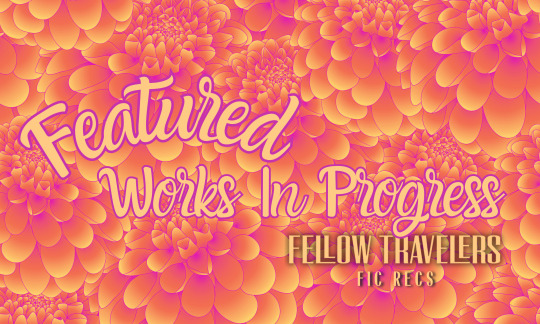
Fellow Travelers Fic Recs | Current WIPs: April 2024
Active WIPs with most recent updates posted in the past month featuring awkward hospital room conversations, a hospital room meet-cranky, and hospital whump... I'm sensing a theme, here. More fake-ish dating, Mama Fuller wisdom, Professor Hawk, a couple road trips, some time travel and a few modern AU's. There really is something for everyone!
Happy reading!
✨ Be sure to show the authors some love and appreciation with kudos and comments on the fics you enjoyed!
🌺 Remember Our Love - Remember Me by Larnee💠[G, 638] Tim Laughlin - the love of Hawkins life is gone. Hawk struggles to move forward until someone unexpected shows up at his doorstep. Tim has never left Hawk, not now, not ever.
🌼 Chances Are by @bluebellsinburbank | ConsumingLove [G, 3K] After a family Thanksgiving, Estelle and Hawk talk. Then she meets Tim.
🌺 I Know I’ve Never Lived Before by @bluebellsinburbank | ConsumingLove [G, 3K] Wherein Hawk completely accidentally and through no fault of his own intentionally ends up dating the man he's sleeping with.
🌼 Within The Heart of Me by drabbleswabbles💠 [NR, 3K] Lucy goes to the hospital to talk to Tim. When she arrives, Hawk is already there.
Otherwise known as, a prompt fill that wanders a bit off the mark, but is close enough in spirit to give credit where credit is due as far as inspiration goes.
🌺 Darkness Before the Dawn by @beyondxmeasure | Cyantific [NR, 350] It’s June 1944, following the US offensive against the German-led Caesar line that tore through a small squad of the 141st Regiment, killing two men and wounding others, along with Sergeant Hawkins Fuller. Following the blast of the Nazi’s K5 railway gun, he underwent surgery to repair sustained shrapnel damage and is now recovering in the Army’s 32nd Evac Hospital. In the bed next to him lies Corporal Marcus Gaines from the 85th Infantry Division, also wounded in action.
Or, the story of how Hawk and Marcus met.
🌼 A Disaster Beyond Measure by drabbleswabbles💠 [NR, 23K] Hawkins Fuller is a campaign manager with a PR disaster on his hands. The solution involves pretending to date none other than Timothy Laughlin.
Featuring: unrealistic portrayals of the life and job of a campaign manager for the sake of the fake dating trope.
🌺 Who Are You (who am I?) by Anonymous [G, 2K] AU- Hawk fails his security clearance after Tim goes to the army and Senator Smith locks him in a mental hospital where he is lobotomised
Or, Tim receives a letter from Mary saying Hawk needs him.
🌼Too old to play (and too young to mess around) by @bejeweledmp3 | ninav [M, 61K] Kimberly Fuller goes on a two-week vacation to San Francisco, in which she: drinks excessive amounts of tea, gets betrayed, cries more than she should, eats donuts, and seeks out truth with the help of a man she only knows from a presentation card; not necessarily in that order.
But mostly, she finds her father in every least expected place. And learns to make her peace with what that means.
🌺Sands of Time (Turn Backwards) by @brouill3r | brouiller [NR, 22K] 1987 Hawkins Fuller is full of regrets for the life he's lived, though Tim once told him he regrets nothing. Hawk so wishes he could say the same.
In the still night air of a hotel room, clutching a cracked paperweight to his chest like it's carved of the finest gold, Hawk gets his wish.
Or, a time-travel fix-it fic that nobody asked for.
🌼 Is it over now? by @satelarry | satelarry [M, 43K] Seeing the love of your life walk away without being able to tell him that you love him has to be one of the worst situations a person can go through. But Hawk decided to fulfill Tim's request, knowing it will be the last. What happens when he wakes up, 18 years before, with the knowledge of what's going to happen if he makes the same decisions? Does the ending always stay the same?
Or, the Time Travel AU in which the only thing ruining Hawk's plan is Tim's stubbornness.
🌺 Again, only better by @madsmeetsmisha | madsmeetsmisha [M, 17K] Hawk had no idea what was really going on here. All he knew was that he was back in 1954 and a completely distraught Tim was standing outside his door. And he also knew that he certainly wouldn't make the same mistake twice.
🌼 🪴His great consuming lovage* 🪴 by @carnivalrow | nightfall_in_winter [T, 2K] Tim's potted plant has a story to tell...
🌺 We'll be on the road like Jack Kerouac by @jesterlesbian | captainquint [M, 4K] He tried to think of what Tim would do or say. The man who had only spoken to his son a handful of times over one weekend in 1968, but had seemed to understand him far better than Hawk ever had.
The business card felt like it was burning a hole in his pocket.
An idea burst to life in Hawk’s mind. This was an emergency if he’d ever seen one.
“What would you say to coming with me to San Francisco?”
Or, Hawk and Jackson go on a cross-country road trip to San Francisco.
🌼 Educate Me by @fullerthanskippy | fullerthanskippy [E, 13K] A Hawk x Tim AU in which the timelines jump from 2012-2014 to present day 2024. When present day Tim receives an invitation to the 10-year reunion of his Georgetown graduating class, he is filled with both hope and dread that he will run into one particular professor.
One man who was the through-line of his two years in grad school. The man who taught him more than he could have ever learned in the classroom.
When Tim is re-acquainted with Professor Hawkins Fuller, he immediately flashes back to 12 years prior, when he first encountered the man that he had no idea would be the greatest love and loss of his life.
Or, tons of garbage filthy smut sprinkled in between pining, angst, and fluff. Contains explicit material including but not limited to the likes of top!hawk, bottom!tim, top!tim, bottom!hawk, dom!hawk, sub!tim, bratty!tim, and much, much more. Enjoy!
🌺 I Sing the Body Electric by telescape8💠 [M, 28K] Modern AU. It all starts on Election Night 2016. Tim falls hard. Hawk falls harder.
💠Authors: if your tumblr (or other socials) isn’t linked, and you'd like it to be, let me know and I'll be happy to add it! Or, if you’re linked already and would prefer not to be, please contact me to remove it.
#works in progress#fellow travelers fic recs#ftficrecs#fellow travelers fics#ftfics wips#ftfics apr24#fellow travelers
13 notes
·
View notes
Text
How Incentive Travel in San Francisco Benefits from Expert Corporate Event Planning Services
Incentive travel in San Francisco has become the most ideal choice for companies that are looking to enhance employee motivation. The city is known for its iconic landscapes, making it the best choice for hosting the best incentive travel ideas.
For More Information Visit Our Website: https://releveunlimitedus.wixsite.com/eventplanning/post/how-incentive-travel-in-san-francisco-benefits-from-expert-corporate-event-planning-services

#Incentive travel in San Francisco#Event Planners in San Francisco#corporate event planning companies in San Francisco#corporate event production in San Francisco#DMC and Support Services in San Francisco#destination management and event planning in San Francisco#Event Management and Design in San Francisco#destination management company in San Francisco
0 notes
Text
The Gateway to Hayward: Hayward Executive Airport in Hayward, CA

Hayward Executive Airport in Hayward, CA, is a key center for private aviation and local economic development. Designed to serve smaller aircraft, corporate flights, and general aviation, this airport benefits both travelers and the Hayward community. With its facilities, professional services, and commitment to safety and efficiency, Hayward Executive Airport strengthens connectivity across the Bay Area and supports a dynamic aviation scene.
A Convenient Choice for Business and Private Travelers Hayward Executive Airport is a favorite among business and private travelers for its convenient access, efficiency, and top-notch service. Unlike major commercial airports, it allows passengers to skip the typical long security lines and boarding processes, providing swift access to private aircraft. For business travelers, this means on-demand travel options that save time and boost productivity.
The airport features multiple fixed-base operators (FBOs) offering services like fueling, aircraft maintenance, passenger lounges, and concierge assistance. These amenities ensure comfort for both travelers and pilots, making it a preferred choice for private flights in the Bay Area. Located near San Francisco, Oakland, and Silicon Valley, the airport offers business executives and frequent flyers quick access to the region’s main economic centers.
Driving Local Economy and Fostering Aviation Community Hayward Executive Airport is essential to the local economy, facilitating business travel and connecting local companies with clients and partners globally, thus enhancing regional economic vitality. Additionally, it hosts a range of aviation-related businesses, including flight schools, charter services, and aircraft maintenance, which generate jobs and attract aviation professionals and enthusiasts to the area.
The airport is home to a vibrant pilot community, supporting general aviation and flight training programs. Its flight schools offer aspiring pilots a chance to pursue aviation careers, while events and open days foster community engagement, giving Hayward residents an opportunity to experience the excitement of aviation firsthand.
More than just an aviation facility, Hayward Executive Airport in Hayward, CA, is a valuable community asset that supports local economic growth and a thriving aviation culture. With accessible services and an ideal location, it serves as a convenient gateway for business and private travelers while contributing to Hayward’s diverse and dynamic economy.
3 notes
·
View notes
Text

Rendering of a monorail on the Strip, 1973
Several competing companies vied for contracts to build a monorail system in Las Vegas in the mid 60s to mid 70s.
• Magi-Cab, an effort by Lockheed and Guerdon Industries, which included styling and architectural elements to be designed by Paul R Williams Associates, was proposed in '66. As late as '68 Magi-Cab proposal was developing to include access to the airport.
• Custom Cabs Inc. proposed a monorail system linking the airport, the Strip, and Fremont St in the early 70s.
• Aerial Transit Systems of Nevada, backed by the Pullman and Bendix corporations, proposed a line on the airport, to the Strip, to the Las Vegas Convention Center.
• Monocab was the concept of monorail developer A.J. Kavanaugh and Rohr Industries, the builders of the San Francisco Bay Area's BART system, who spent four years and $2 million trying to sell the project to the City, County officials, and the general public.
Efforts were abandoned by early '75, then revived in the 90s.
Photo Caption: “New York Times, 5/4/73-Las Vegas: Artist’s rendering of part of projected $80-million elevated transit system in Las Vegas. Construction is supported by private business interest, opposed by environmentalists and the city’s taxi industry.” | “Skylift Travel Plan Revealed.” Review-Journal, 12/18/66; B. Vincent. “Air Travel and Airports of the Future.” The Nevadan, 2/4/68; “Tramway application set to be filed.” Review-Journal, 8/16/70; J. Hanna. “Rapid transit offered by Nevada firm.” Review-Journal, 6/11/71; “Tourist nix monocab survey.” Review-Journal, 1/10/74; SkyLift Magi-Cab, Las Vegas, Nevada, Paul R Williams Project.
39 notes
·
View notes